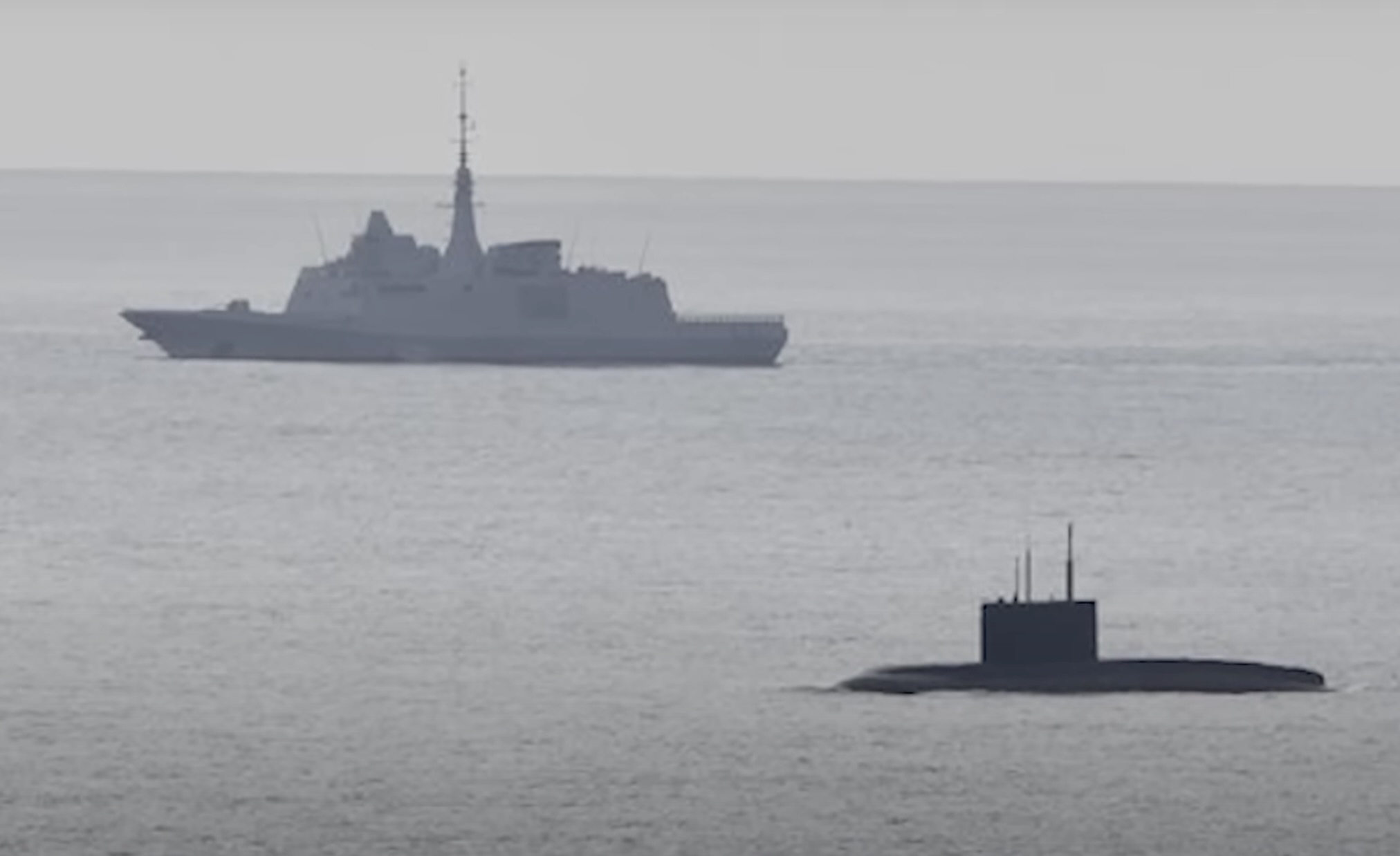


The episode unfolded after NATO released images last week of a French frigate observing a Russian submarine operating on the surface off Brittany.
Russia’s Black Sea Fleet said on Monday, 13 October, that the Novorossiysk — a Project 636.3 “Improved Kilo”-class boat commissioned in 2014 — was on a “scheduled inter-fleet transit” following tasks in the Mediterranean, and that reports of a serious malfunction were false. State agency TASS has previously highlighted that submarines of this class carry Kalibr cruise missiles.
Dutch authorities stated over the weekend that the Novorossiysk was under tow in the North Sea, and the Netherlands later confirmed that its navy had escorted the submarine together with the Russian towing vessel Yakov Grebelsky. NATO’s Maritime Command, in a post on X on 9 October, published photographs of a French Navy frigate monitoring a surfaced Russian submarine off Brittany and said the Alliance maintained “constant vigilance and maritime awareness across the Atlantic”.
Speaking in Slovenia on Monday, Rutte used the incident to characterise what he said was the reduced profile of Russia’s naval presence in the Mediterranean. “There’s a lone and broken Russian submarine limping home from patrol,” he said, adding a Cold War-era literary reference by quipping it was now “the hunt for the nearest mechanic”. Russia rejected the suggestion that the submarine’s surfacing was emergency-related.
Open-source commentary about the vessel’s condition intensified after VChK-OGPU, a Telegram channel that publishes alleged security leaks from Russia, reported on 27 September that fuel had leaked into the Novorossiysk’s hold, posing an explosion risk. Reuters cited the channel’s claims while noting the lack of official confirmation. The Russian Navy has since maintained that the boat had “no malfunctions” and was adhering to international rules governing submerged transits in constrained waters like the English Channel.
The surfaced passage of a conventionally powered submarine through the Channel is not unusual in itself; international navigation norms and safety considerations often require submarines to proceed on the surface in congested, shallow, or narrow waterways. The point of contention in this case is whether the Novorossiysk was compelled to remain surfaced and accept a tow due to technical problems, as suggested by Dutch reporting of a tug escort, or chose to do so as part of a routine inter-fleet movement, as claimed by Moscow.
NATO’s photographs, posted on 9 October, showed a French frigate observing the submarine on the surface off Brittany. While NATO did not publicly name the boat, subsequent reporting identified it as the Novorossiysk. The Alliance framed the interaction as standard maritime situational awareness rather than an incident requiring escalation, saying only that it “stands ready to defend” Allied territory and sea approaches.
Russia’s statement on Monday reiterated that the submarine had completed tasks in the Mediterranean as part of its permanent operational formation there, before returning in a surface transit in accordance with rules for the English Channel. The Novorossiysk is among the Improved Kilo-class submarines associated with Kalibr cruise missiles, which have been used by Russia in long-range strikes since the expansion of its war against Ukraine. The Black Sea Fleet provided no detail on the tasks completed or the submarine’s ultimate destination.